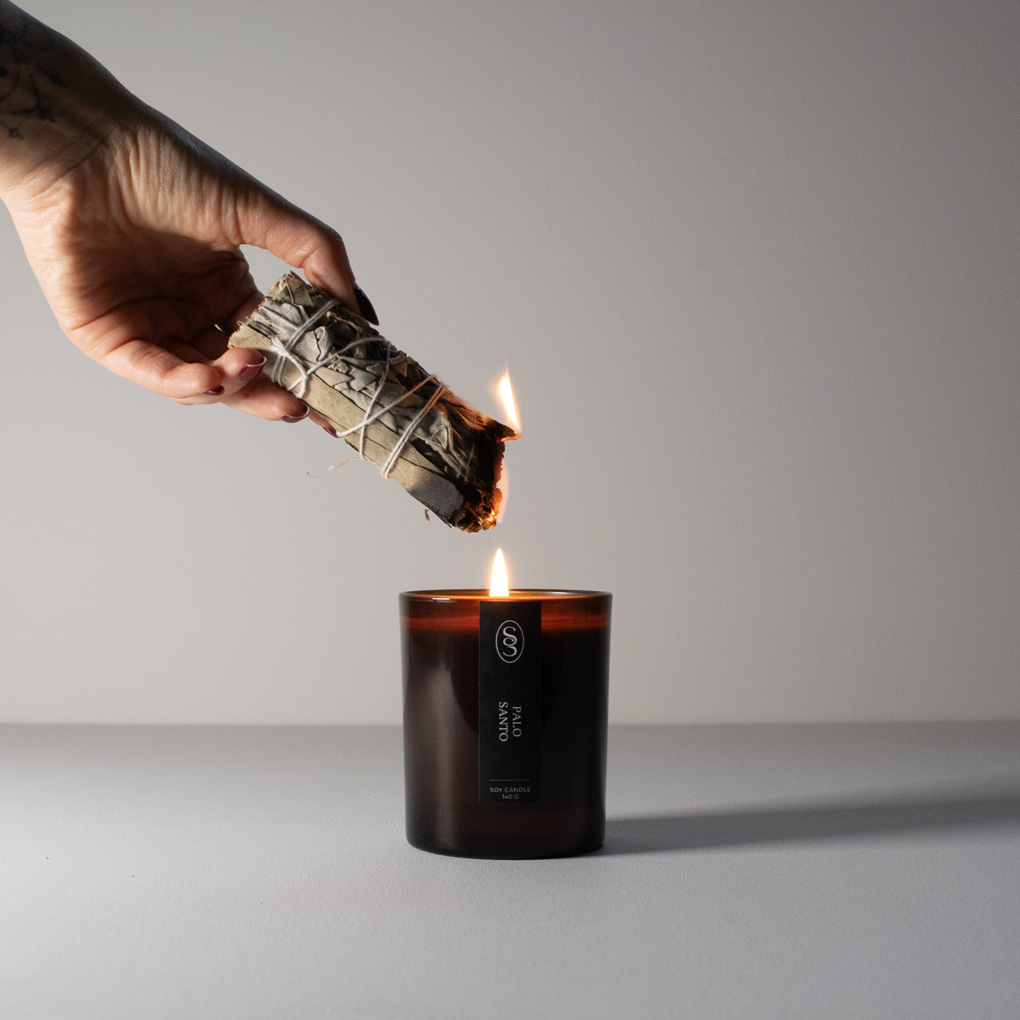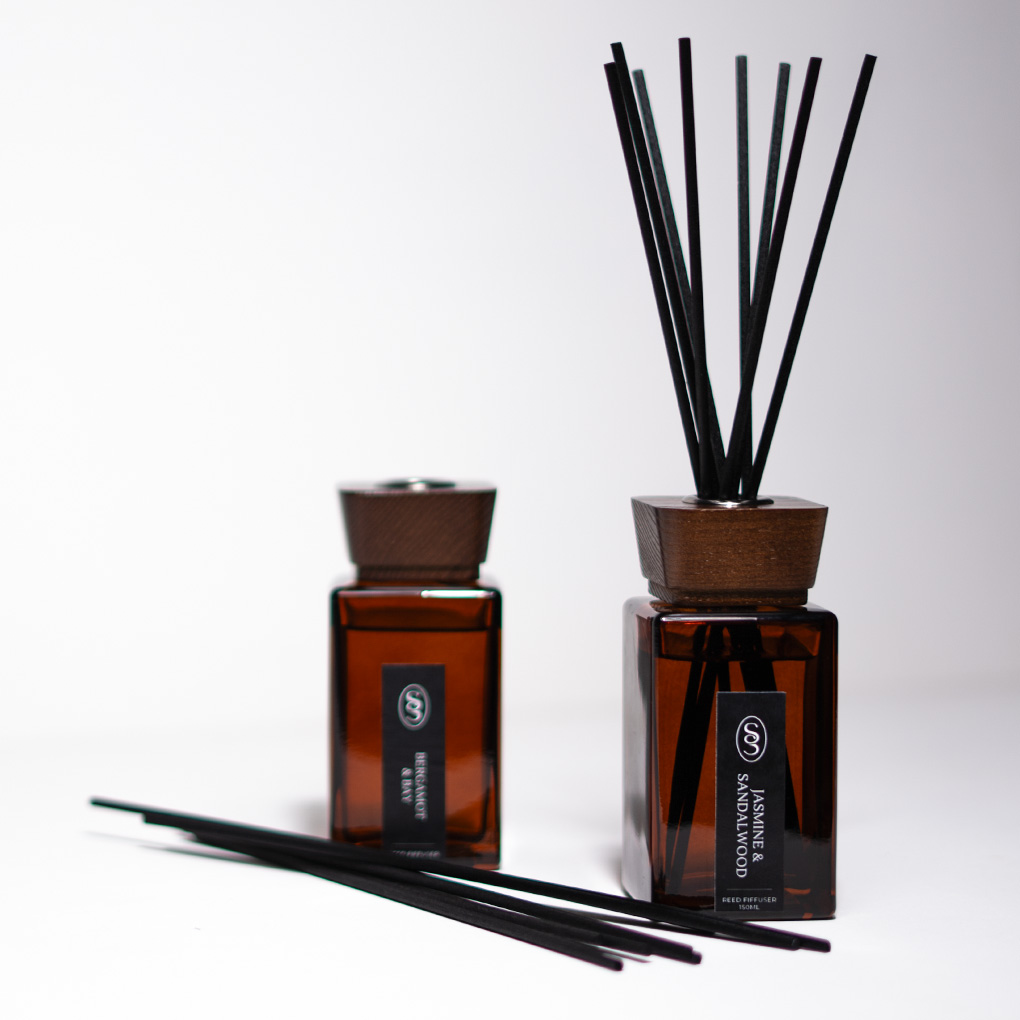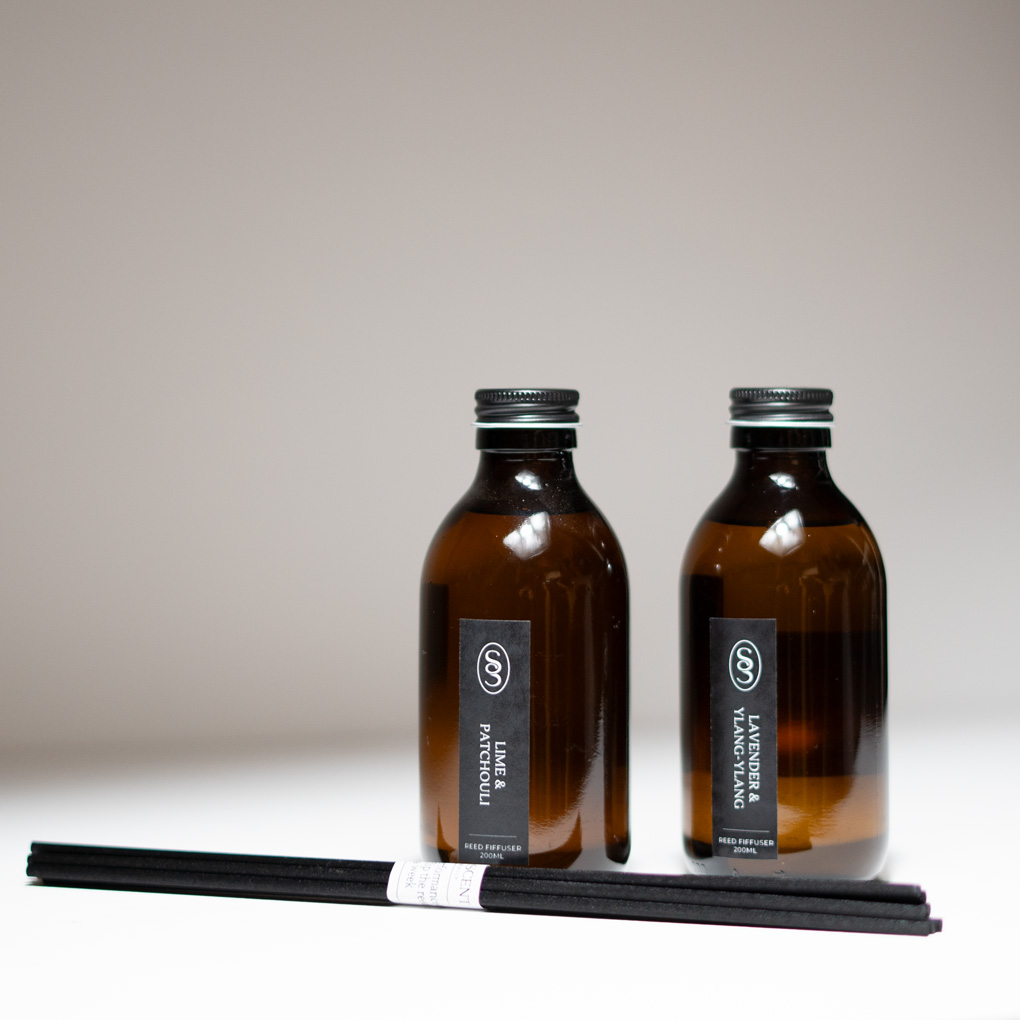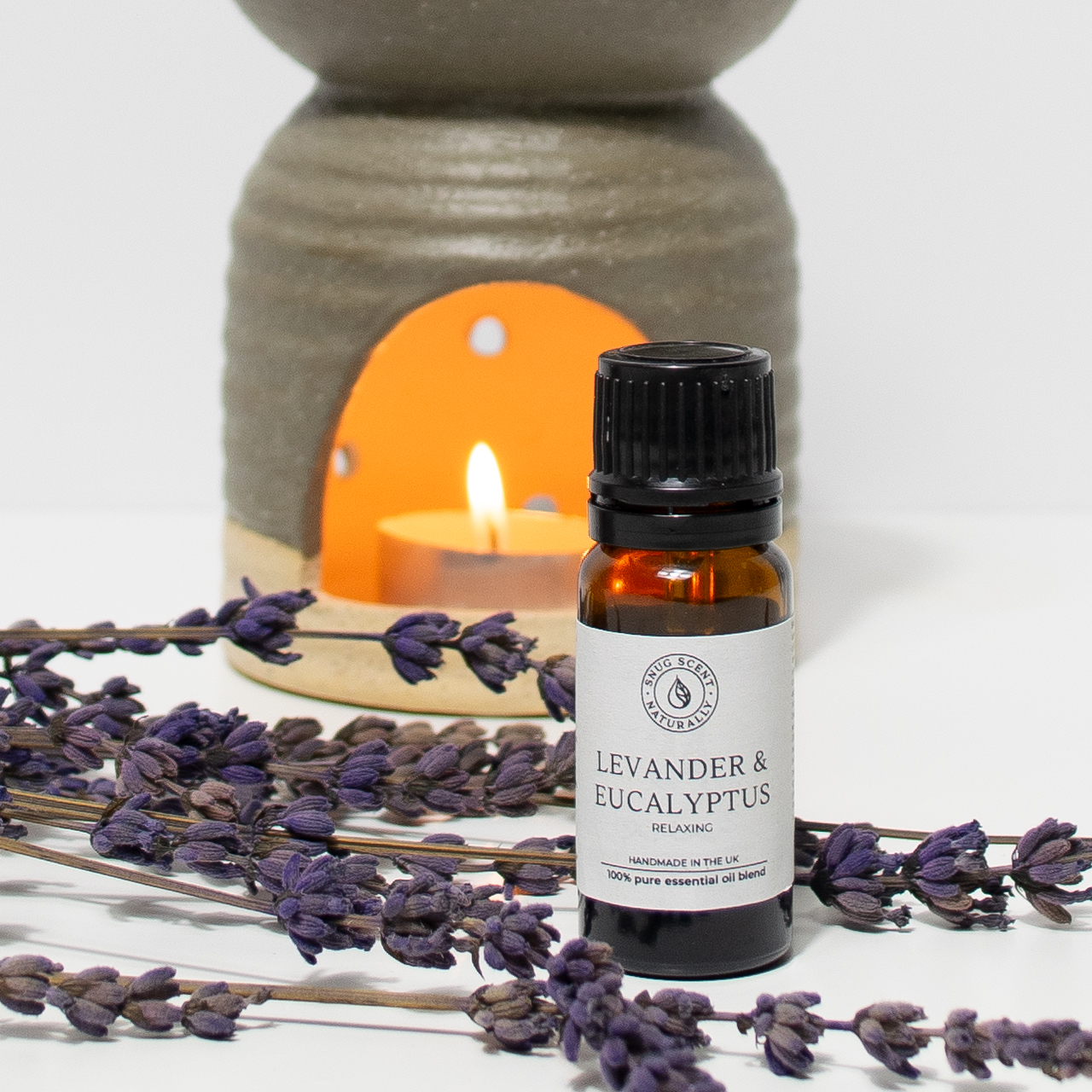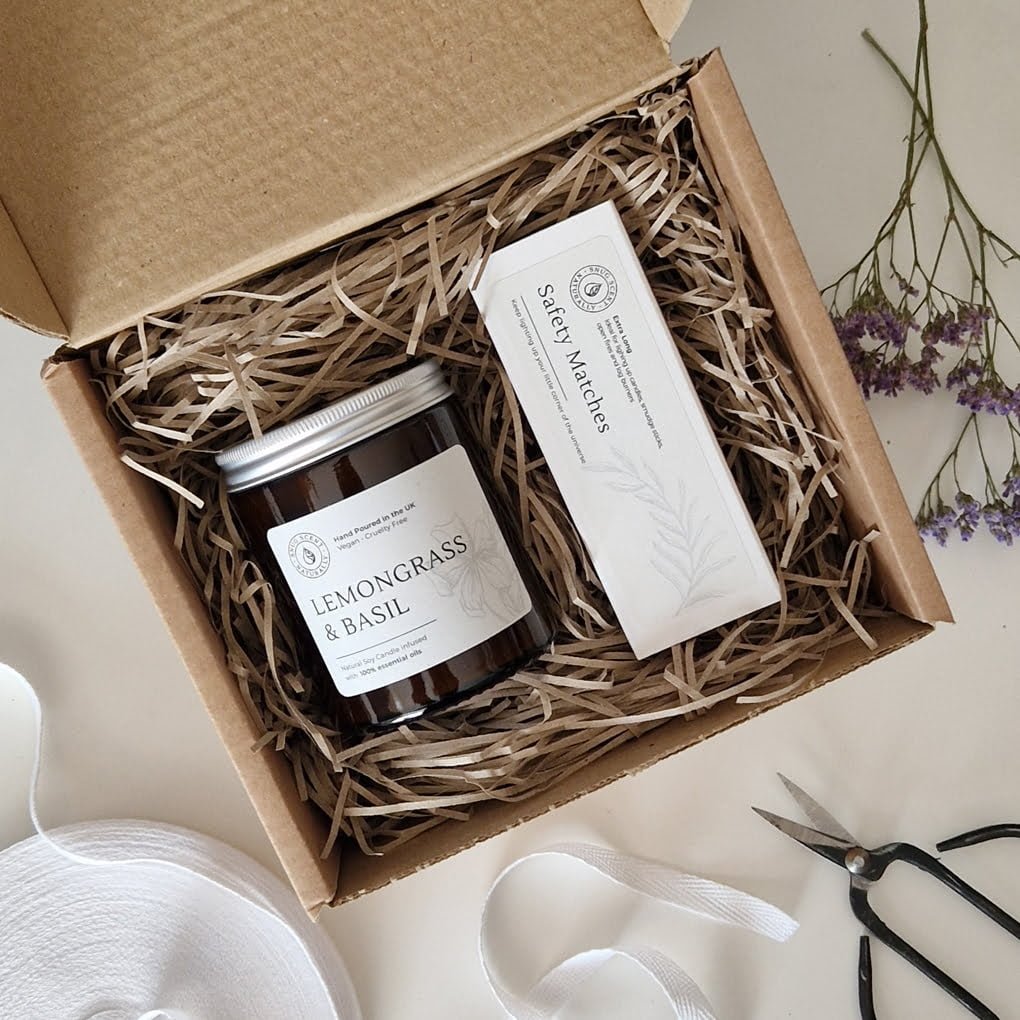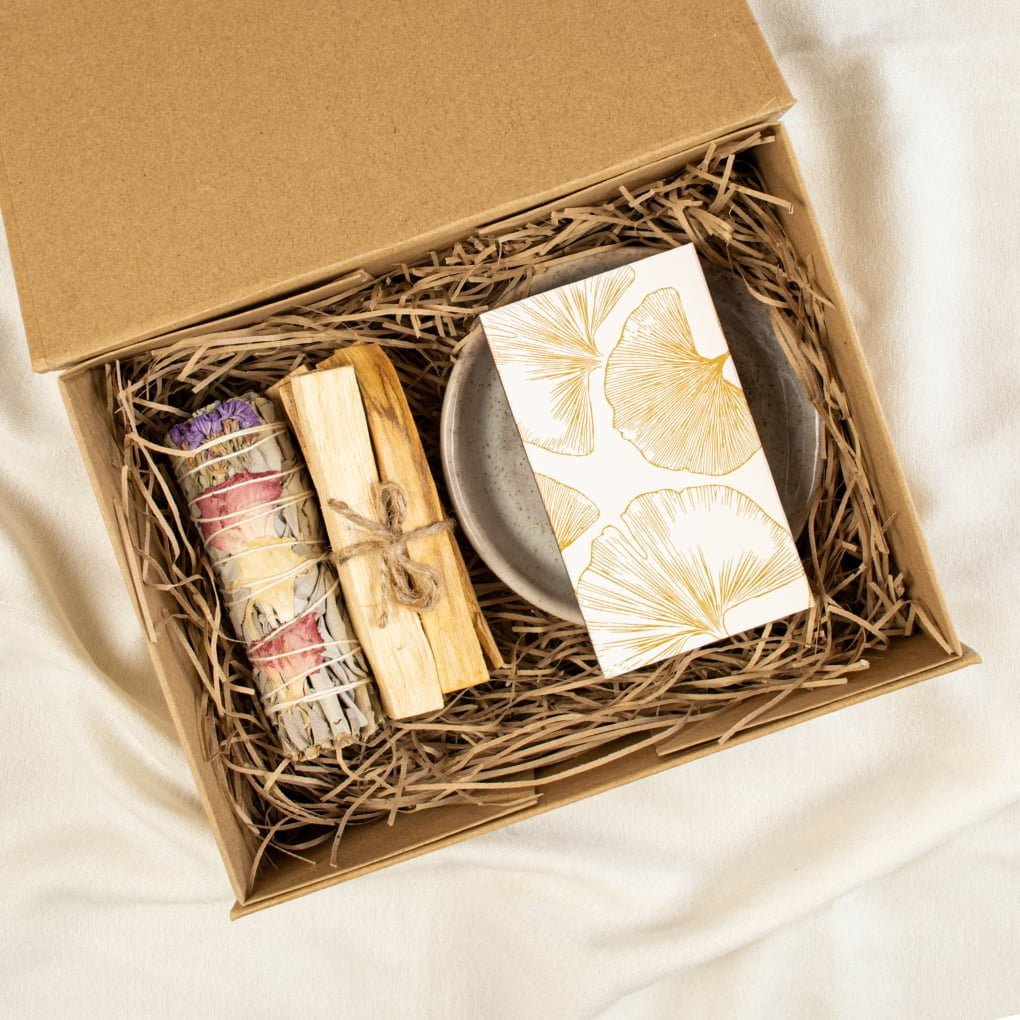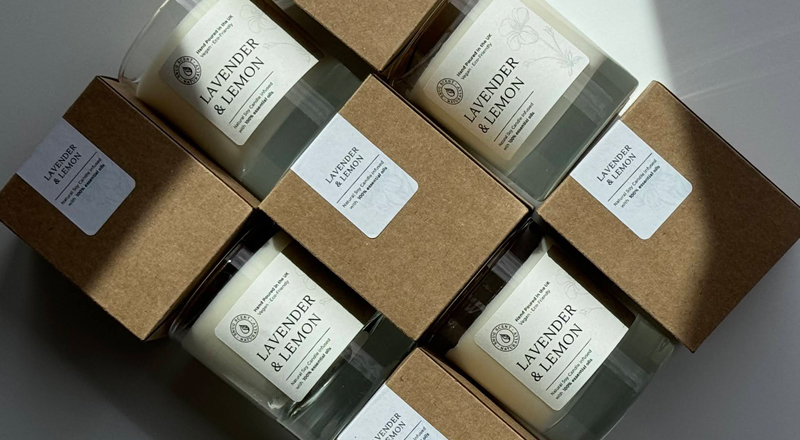About Candles
Natural vs. Synthetic Candles: How to Choose the Best Ones
Candles have long been cherished for their ability to create a serene ambience and add delightful scents to our living spaces. However, it’s crucial to choose the right type of candle to ensure a safe and healthy environment. This guide delves into the world of natural candles made with pure essential oils and chemical-free ingredients, contrasting them with synthetic fragranced candles to highlight the benefits of choosing the former for a toxic-free home.
Let’s compare synthetic and natural candles side-by-side to better understand their differences. This table lays out key aspects of each type, from their base materials and scent sources to their health and environmental impacts. Next, we’ll dive into more detailed explanations of each factor to help you make an informed decision about which type of candle suits your needs and values best.
| Factor | Synthetic Candles | Natural Candles |
|---|---|---|
| Base Material | Paraffin wax, a petroleum byproduct | Soy wax, beeswax, coconut wax, other plant waxes |
| Scent Source | Synthetic fragrance oils | Essential oils, natural fragrance oils |
| Health Impact | Can emit harmful chemicals like toluene and benzene | Non-toxic, free from harmful chemicals |
| Environmental Impact | Non-renewable, can release harmful pollutants | Renewable resources, biodegradable |
| Burn Quality | Often burns unevenly, can produce soot | Burns cleanly with little to no soot |
| Cost | Generally cheaper due to synthetic materials | Often more expensive due to pure, natural ingredients |
| Scent Authenticity | Engineered scents can be more intense but less natural | Authentic and subtle scents from nature |
| Therapeutic Benefits | Lacks therapeutic properties | Often provides aromatherapy benefits |
| Wick Type | May contain metal cores | Usually cotton, wood, or other natural materials |
| Sustainability | Less sustainable due to reliance on petrochemicals | Supports sustainable practices in farming and production |
| Allergenic Potential | Higher due to chemicals and additives | Lower, more suitable for sensitive individuals |
| Biodegradability | Not biodegradable | Biodegradable |
| Longevity | Long burning due to additives | Varies, generally burns slower due to natural waxes |
| Aesthetic Variety | Wide range of colors and shapes due to synthetic dyes | More natural, subdued aesthetic |
| Transparency | Often lacks detailed ingredient disclosure | High level of transparency about ingredients |
Natural Candles
When selecting candles for your home, it’s essential to weigh the benefits and potential drawbacks of various types available on the market. While many candles offer a pleasant fragrance and contribute to a warm ambiance, it’s important to consider factors such as health, environmental impact, and burn quality. Let’s explore the pros and cons of natural candles to help you make an informed choice.
Pros
- Natural Ingredients: Candles made from natural materials such as soy wax, beeswax, or coconut wax are free from artificial additives. This makes them a cleaner choice for those wanting to avoid synthetic chemicals. For example, natural candles don’t release harmful toxins, offering a safer, chemical-free option for your home.
- Eco-Friendly Production: The production of natural candles often supports sustainable agriculture and beekeeping practices. Since soy and beeswax are renewable resources, natural candles leave a lighter environmental footprint. Energy-intensive processes can still occur depending on where and how companies source the raw materials.
- Cleaner Burn: Natural candles generally produce less soot than synthetic candles, which helps maintain better air quality indoors. This reduces the chances of dark soot deposits on your walls or furniture. Though they burn cleaner, you still need to ensure proper ventilation, as any candle can contribute to indoor air pollution if used excessively.
- Aromatherapy Benefits: Natural candles are often scented with essential oils, which provide added aromatherapy benefits. For example, a lavender-scented candle can help promote relaxation, while a eucalyptus candle might help clear the airways. However, the natural fragrances are typically softer and may not fill a large room as quickly as synthetic alternatives.
Cons
- Higher Price: Natural candles, especially those made with beeswax or organic materials, tend to be more expensive. This can be a drawback for those looking for an affordable way to add scent to their space. The higher cost reflects the premium materials and sustainable practices involved in their production.
- Subtle Fragrance: While natural candles are often preferred for their purity, the scents derived from essential oils can be subtler compared to synthetic fragrances. This can be seen as both a pro and a con, depending on your preference. If you prefer strong, long-lasting scents, natural candles may not offer the intensity you’re looking for.
- Shorter Shelf Life: Natural candles tend to have a shorter shelf life because they lack preservatives or stabilisers. Essential oils can lose potency over time, which might affect the fragrance strength as the candle ages. In contrast, synthetic candles often retain their scent for longer periods due to added stabilisers.
- Limited Design Variety: Natural candles are often more focused on simple, earthy designs that align with their eco-friendly appeal. While this suits minimalist or nature-themed decor, they may not offer the same level of customization in colors, shapes, or intricate designs found in synthetic candles. However, their natural aesthetics appeal to those who prefer a more rustic or organic look in their home.
By considering these factors, you can better assess which type of candle suits your needs, lifestyle, and priorities. Each candle type has its advantages and disadvantages, making it essential to choose wisely based on your health, budget, and environmental concerns.
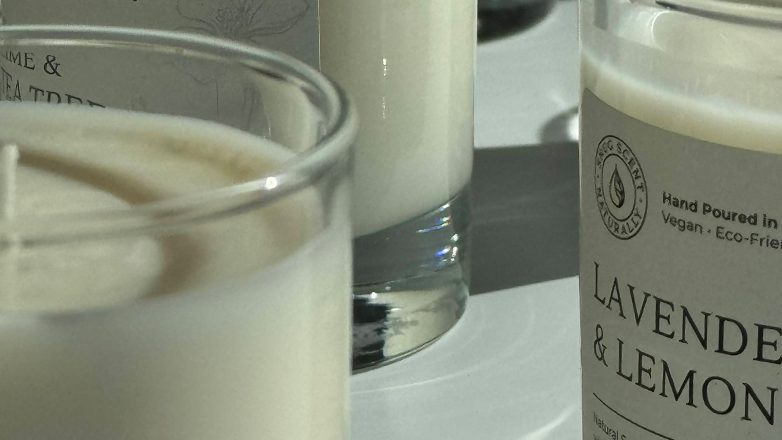
Synthetic Candles
Certain candles, made from a variety of materials, are often popular for their affordability and wide range of scents. They offer a convenient way to add fragrance and create a warm atmosphere in homes. Many people choose these candles for their accessibility and the versatility they provide in design and fragrance. However, like all products, there are pros and cons to consider, especially when thinking about health, environmental impact, and cost. Let’s explore these factors of synthetic candles in more detail to help guide you in making the best choice for your home.
Pros
- Affordability: Many candles, especially those made from certain waxes, can be cost-effective. This is great for individuals looking for an affordable way to add fragrance and ambience to their homes without breaking the bank.
- Variety of Scents: With a wide range of synthetic fragrances available, you can find candles in almost any scent imaginable, from fruity to floral to complex blends that may be hard to replicate using only natural ingredients.
- Burn Time: Some types of candles, due to their material, can have a longer burn time. This means you get more hours of fragrance and light, which can be especially important for long-lasting use.
- Design Flexibility: Certain materials allow for a wide variety of shapes, colours, and designs, which adds to the aesthetic appeal and can easily match different home decor.
Cons
- Potential Allergens: Some candles may contain ingredients, whether natural or synthetic, that can trigger allergies or sensitivities in certain individuals. This can lead to respiratory issues, headaches, or skin irritations for some people. Burning paraffin emits harmful substances such as benzene and toluene, both of which experts recognise as carcinogens. Regular exposure to these chemicals, especially in poorly ventilated spaces, could increase health risks.
- Environmental Impact: Depending on the materials used, some candles may not be as eco-friendly as others. Factors such as sourcing, production, and the biodegradability of the wax can vary significantly. Waxes in such candles come from non-renewable fossil fuels. Its use and production contribute to the depletion of these limited resources and increase carbon emissions. Unlike natural alternatives, the remnants and byproducts of paraffin candles contribute to landfill waste and do not biodegrade easily.
- Soot Production: While some candles may produce more soot than others, it’s important to be mindful of the ventilation in your home and the overall air quality. Certain materials, when burned, can emit particles that contribute to indoor pollution. For example, paraffin candles often produce black soot that can coat walls, ceilings, and furniture. More importantly, inhaling soot can exacerbate respiratory issues and trigger allergies or asthma.
- Health Concerns: Many candles that use synthetic fragrances often contain phthalates, which are chemicals used to make scents last longer. Phthalates have been linked to hormone disruption, particularly affecting the endocrine system, which regulates hormones in the body. Continuous exposure to phthalates, especially in poorly ventilated spaces, may contribute to a range of health issues, including reproductive problems, developmental issues in children, and an increased risk of certain cancers. While not all candles with synthetic fragrances contain phthalates, it’s important to check ingredient labels or opt for phthalate-free products to minimize potential long-term health risks.
In the end, the choice of candle depends on individual preferences, such as budget, scent preference, and environmental considerations. Each type has its own set of advantages and disadvantages that cater to different needs and lifestyles.
Understanding Natural Essential Oils
Various cultures have used essential oils for thousands of years for their medicinal and therapeutic benefits. This historical significance adds depth and a sense of tradition to their use in modern products like candles.
Pure Extraction from Nature
Natural essential oils are the heart of naturally scented candles, offering not just pleasing aromas but also a host of therapeutic benefits. Essential oils are concentrated liquids extracted from various parts of plants, including flowers, leaves, bark, roots, seeds, and peels. This natural sourcing ensures that the oils carry the genuine scents and essence of the plant. The most common methods for extracting essential oils are steam distillation and cold pressing. These processes preserve the integrity and potency of the oils without the use of chemicals, making them pure and potent.
Complex Aromas
Essential oils, unlike lab-engineered synthetic fragrances, capture the subtle nuances of their natural sources. This complexity results in a more authentic and satisfying sensory experience. There is a vast range of essential oils available, each with its unique fragrance and properties. From the deep, soothing aroma of lavender to the crisp freshness of citrus, essential oils offer a diverse palette for scenting candles.
Therapeutic Properties
Many essential oils are known for their health-promoting properties. For example, lavender is renowned for its calming effects, which can help reduce stress and improve sleep. Peppermint can invigorate the senses and boost energy. Using candles scented with essential oils can contribute to a holistic approach to health, enhancing physical, emotional, and mental well-being through the power of aromatherapy.
When selecting essential oils for candles, it’s important to choose those that are 100% pure and of therapeutic grade. This ensures that the candles are free from synthetic additives and provide the maximum aromatic and health benefits. Often, it is difficult to recognise if the candle is natural or not just by reading its label. However, there are some key elements that can help you to tell the differences between fragrances and essential oils.
Understanding the attributes and benefits of natural essential oils can enhance your appreciation of naturally scented candles. These oils bring more than just fragrance to a candle; they infuse it with natural beauty, a touch of wellness, and an environmentally sound choice that resonates with mindful consumers.

Comparing Synthetic Fragrances
While synthetic fragrances are ubiquitous in many scented products, including candles, they differ significantly from natural essential oils. Here’s a closer look at synthetic fragrances, how they are made, and why natural alternatives might be a better choice:
Chemical Composition
Laboratories create synthetic fragrances by combining various chemical compounds to mimic natural scents. These chemicals are formulated to be strong and long-lasting but often lack the subtlety and depth found in natural aromas. Many synthetic fragrances include substances like phthalates and parabens, which can pose health risks. Phthalates, for example, are known endocrine disruptors, and parabens have been linked to skin irritation and other health issues.
Lack of Therapeutic Benefits
Unlike essential oils, synthetic fragrances offer no therapeutic benefits. They are designed purely for their smell, without the natural properties that can promote physical or mental well-being. Due to the harsh chemicals they contain, synthetic fragrances are more likely to cause allergic reactions and sensitivities. This can lead to symptoms like headaches, dizziness, and respiratory issues.
Environmental Impact
Synthetic fragrances often contain non-biodegradable elements that can persist in the environment, contributing to pollution and harming wildlife. The production of synthetic fragrances can be resource-intensive, involving complex chemical processes that require significant energy inputs and generate considerable waste.
Cost-Effectiveness
One reason manufacturers use synthetic fragrances is their cost-effectiveness. Producing synthetic scents is generally cheaper than extracting natural essential oils. Synthetics offer consistency in scent that natural extractions can struggle to match due to variations in crop, weather, and harvesting conditions.
Consumer Perception
Synthetic fragrances are often perceived as more potent and longer-lasting. This can be appealing to consumers who prioritise a strong scent over natural qualities. The ability to create any fragrance profile cheaply and quickly means consumers have access to a wide array of scents, more so than what is available naturally.
In conclusion, while synthetic fragrances have their place in the market due to their cost and consistency, they come with potential health and environmental drawbacks. If you prioritise health, well-being, and ecological sustainability, natural essential oils offer a superior alternative, delivering authentic fragrances along with beneficial properties that enhance the candle-burning experience.
Finding the Best Natural Candle for Your Home
Selecting the right candle for your home involves more than just picking a scent you enjoy. To ensure you are making a safe and environmentally friendly choice, consider the following factors:
Understand the Ingredients
Opt for candles made from natural waxes like soy, beeswax or coconut wax. Soy wax is very popular amongst candlemakers due to its stability, scent throw properties and availability. All these natural waxes burn cleaner and are more sustainable than paraffin wax, which releases harmful toxins. Ensure the scents come from natural sources such as pure essential oils rather than synthetic fragrances, which can contain harmful chemicals.
Consider the Wick
Always choose candles with lead-free wicks. Cotton or wood wicks are preferable as they do not release harmful heavy metals into the air when burned, unlike some older or cheaper candles that may use lead-core wicks.
Look for Transparency and Labeling
Good brands clearly label their candles’ components, allowing you to avoid unwanted chemicals. Transparency in ingredients is key to assessing the quality and safety of the candle. Check for relevant certifications such as non-GMO, organic, or cruelty-free. These labels help ensure that the products are produced without harmful pesticides, genetically modified organisms, or animal testing.
Assess the Brand’s Ethical Commitments
Support companies that commit to sustainable practices in sourcing and production. This includes using responsibly sourced materials and implementing environmentally friendly manufacturing processes. Consider brands that give back to the community or engage in charitable activities, adding an extra layer of value to your purchase.
Consider Your Health and Well-being
Choose candles that are free from known toxins to protect your health. This is particularly important if you have allergies, asthma, or small children and pets in your home. For additional benefits, select candles that offer aromatherapy properties tailored to your needs, such as relaxation, improved focus, or enhanced mood.
Personal Preference and Aesthetics
Select a scent that you enjoy and that suits the intended space. Some scents are better for relaxation, like lavender or chamomile, while others, such as citrus or peppermint, are more invigorating. Also, consider the design and style of the candle. It should not only smell good but also complement the aesthetic of your home.
Choosing the right natural candle enhances your living space both aesthetically and atmospherically. By considering these factors, you can enjoy your candles safely and sustainably, knowing they contribute positively to your home and the environment.

Choosing the Best Non-Natural Candle for Your Home
Choosing the best non-natural candle for your home requires more than just selecting a fragrance you like. It’s important to weigh several factors to ensure the candle meets your needs in terms of cost, longevity, and overall safety.
Understand the Ingredients
Look for candles made from paraffin or other synthetic waxes if you prioritise affordability and a stronger scent throw. These materials often provide longer burn times and are typically more cost-effective. Make sure to choose candles with synthetic fragrances designed for a consistent scent experience, though be mindful of potential allergens like phthalates.
Consider the Wick
Same as with natural candles, opt for candles with cotton or other lead-free wicks. This is crucial as lead-core wicks, still present in some cheaper candles, can release harmful heavy metals into the air. Cotton and paper-core wicks are cleaner-burning and safer for indoor use.
Check Labeling and Transparency
Ensure that the brand discloses key ingredients used in the candle. While non-natural candles may contain synthetic materials, it’s important to avoid those with excessive chemicals that could be harmful when burned. Brands that provide transparency about their manufacturing process or adhere to specific safety standards, such as “phthalate-free,” are preferable.
Assess Longevity and Burn Time
One of the advantages of non-natural candles is their shelf life due to the composition of the wax and added stabilisers. Consider candles that offer extended use, especially if you are looking for a candle that is also a part of your home interior.
Style and Scent Variety
Non-natural candles offer a wide variety of colours, shapes, and intricate designs. If you’re looking to match a specific home decor or event theme, these candles can provide more options. Additionally, synthetic fragrances allow for a broad array of scent profiles, from fruity and sweet to complex and exotic blends.
Health and Ventilation Considerations
While non-natural candles can provide stronger fragrances, they may emit soot or chemicals when burned. Ensure you use these candles in well-ventilated areas to reduce any potential indoor air quality issues. If you or someone in your home has respiratory concerns, it’s best to opt for candles labelled as low-soot or choose synthetic candles with cleaner-burning formulations.
By considering these factors, you can find a non-natural candle that offers strong scents, longevity, and aesthetic appeal, making it a good fit for your home without sacrificing safety or style.
Conclusion
Embracing natural candles made with essential oils and free from chemicals not only enhances your home’s ambience but also supports your health and the planet’s well-being. As you light a natural candle, enjoy not only the serene light and delightful scents but also the peace of mind that comes with making a responsible choice.
